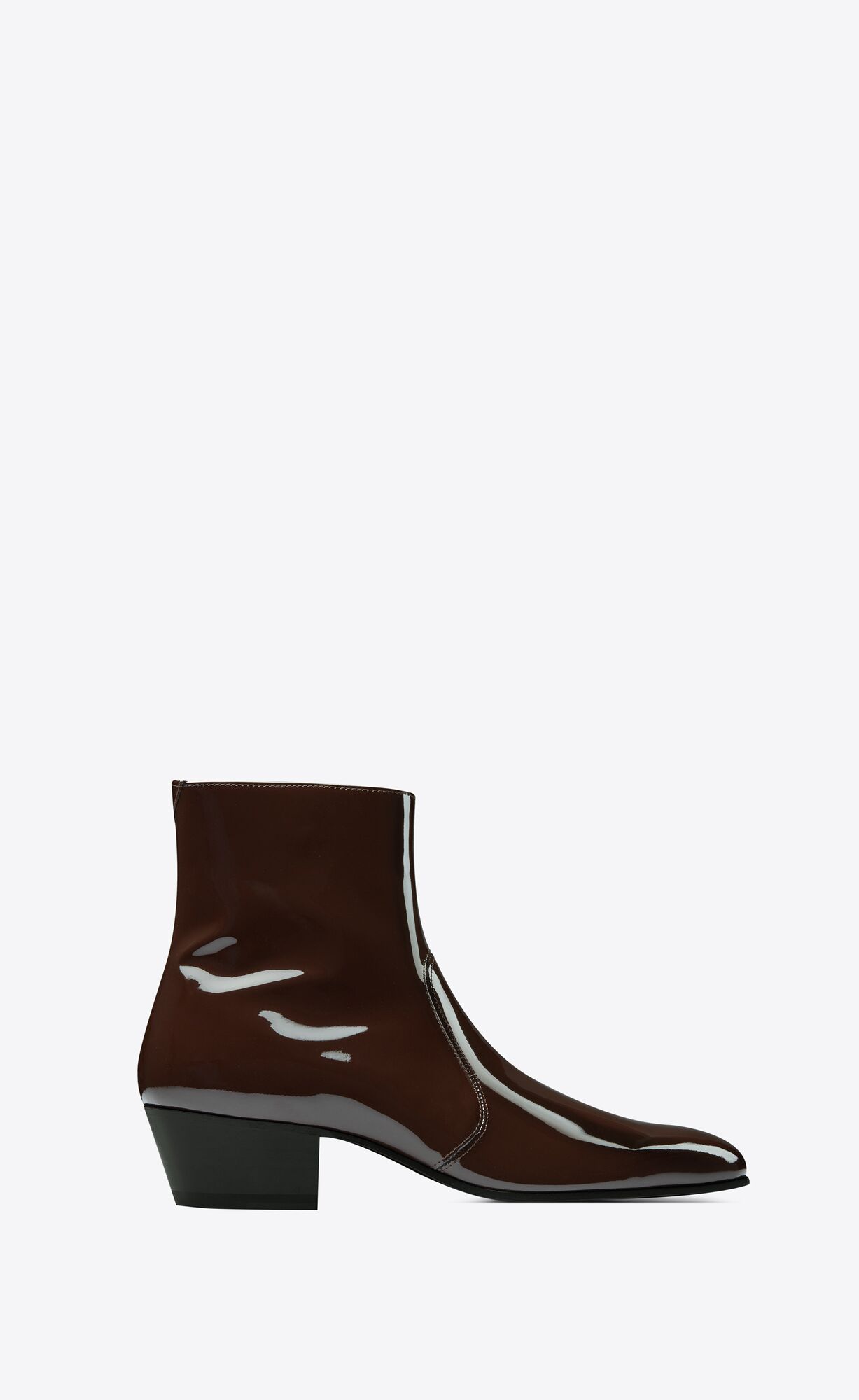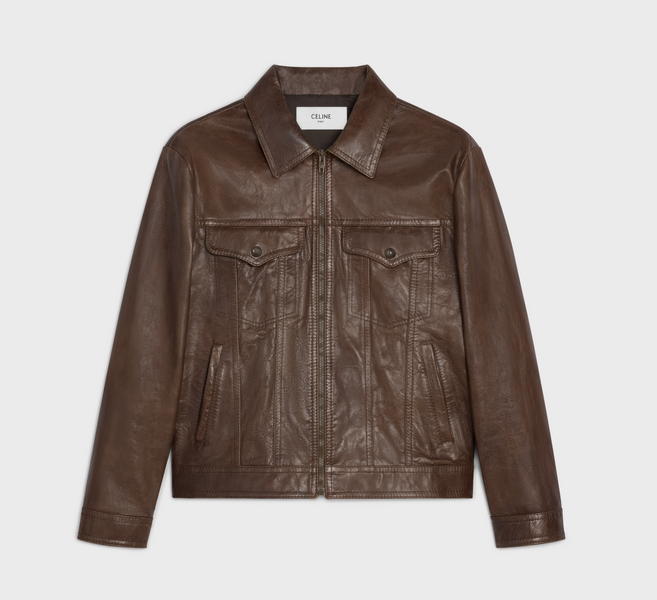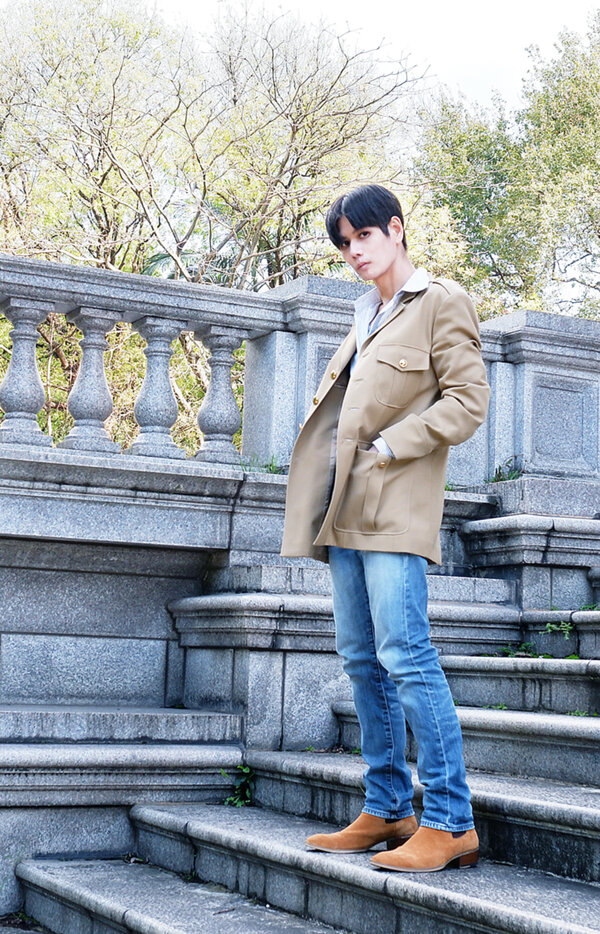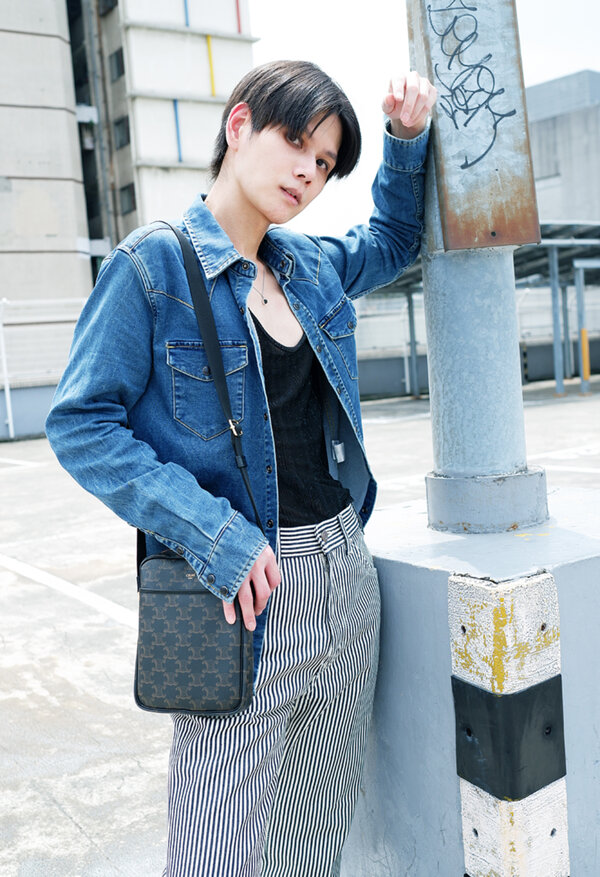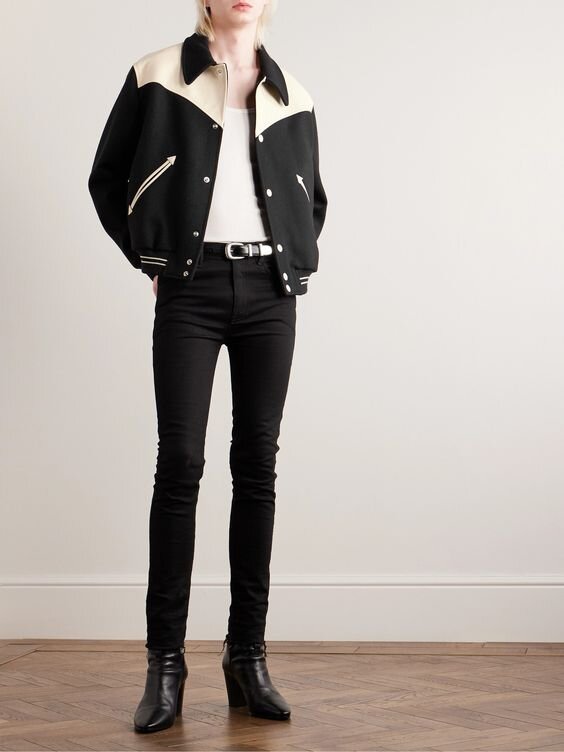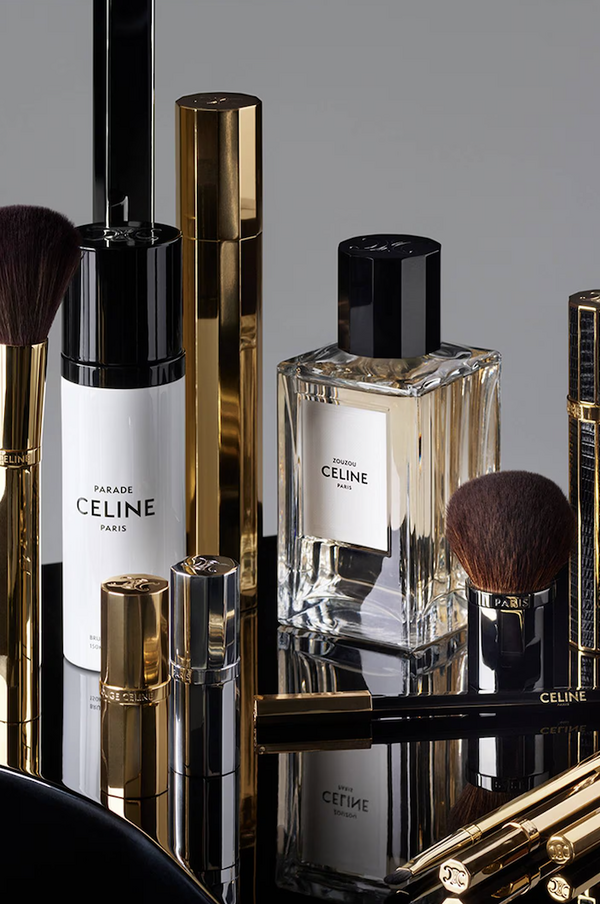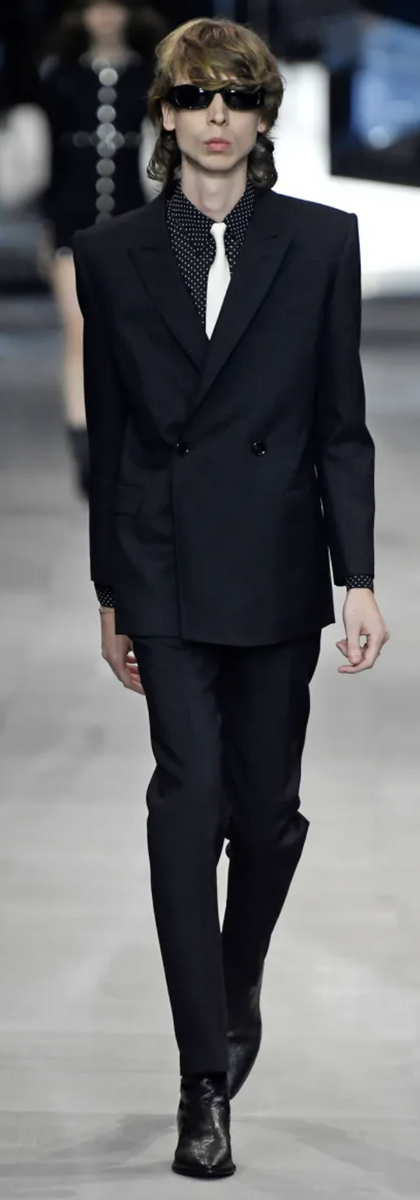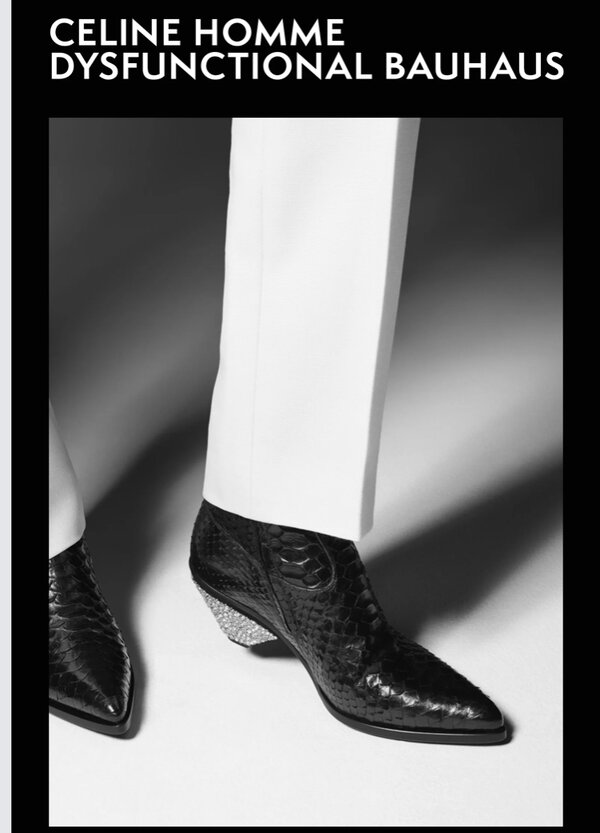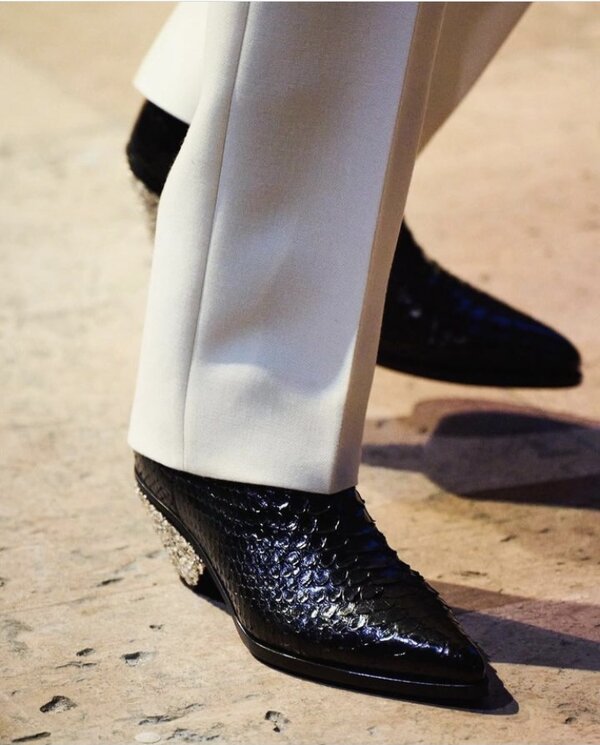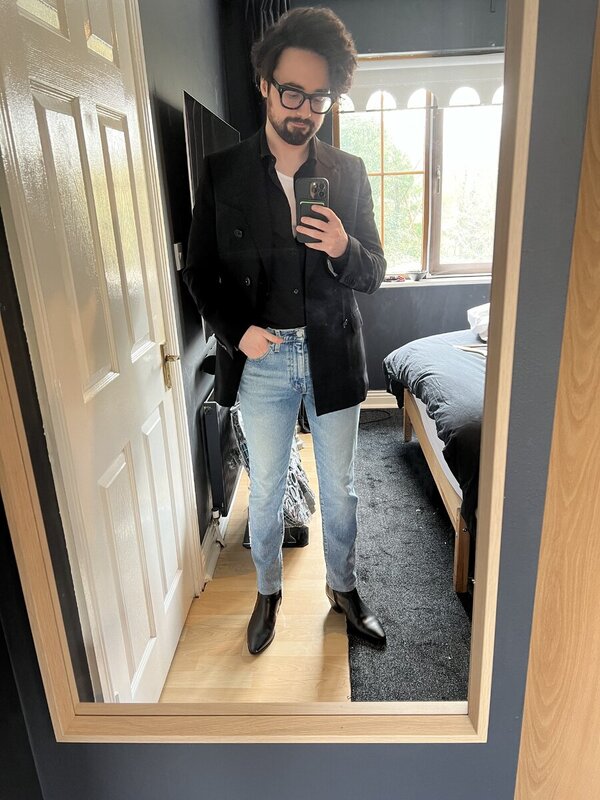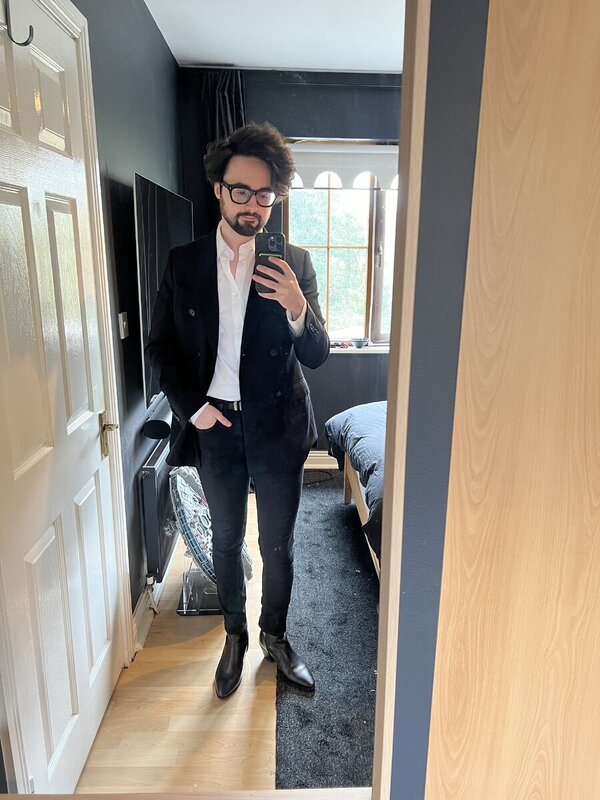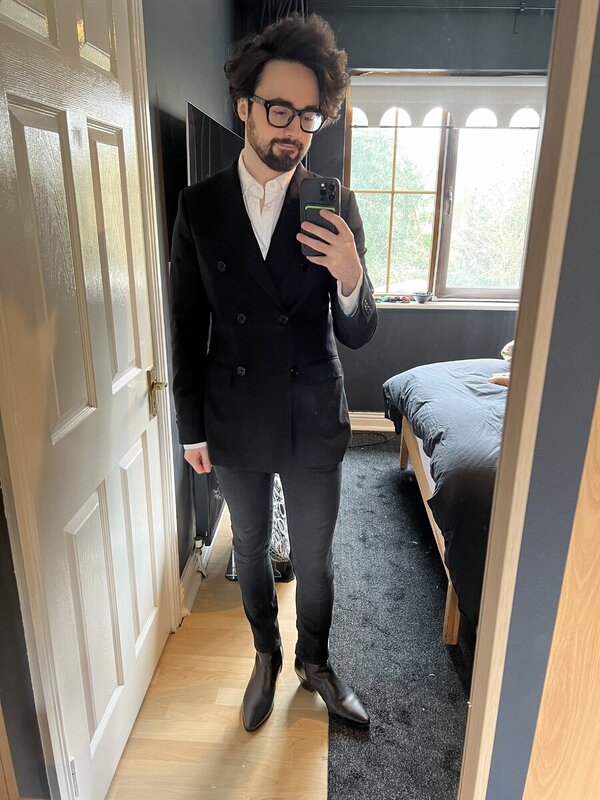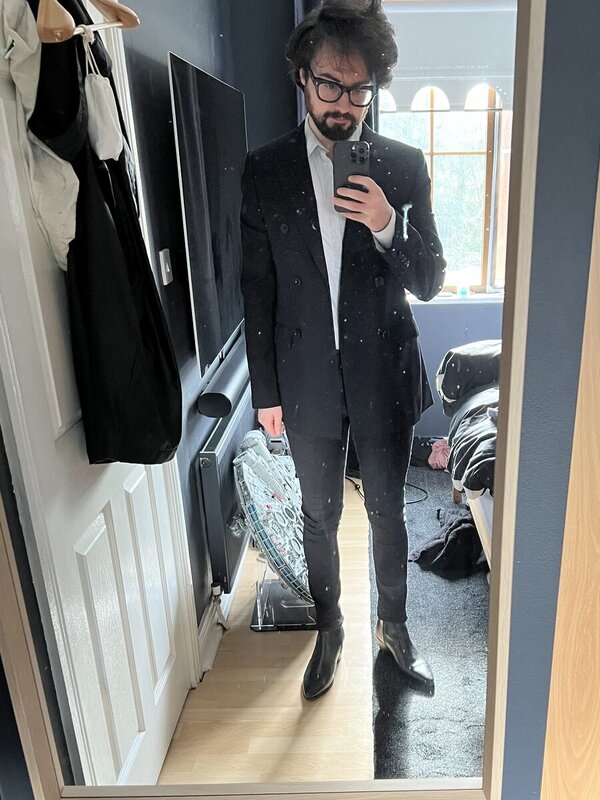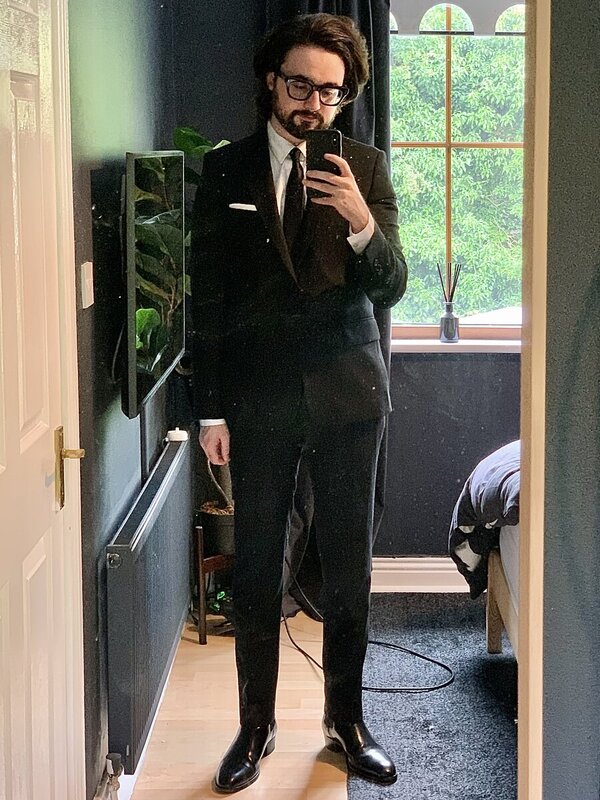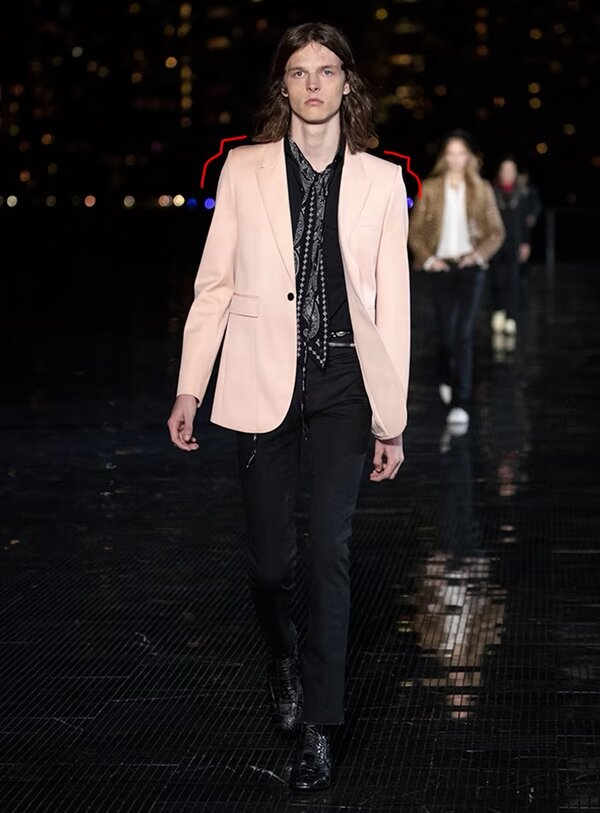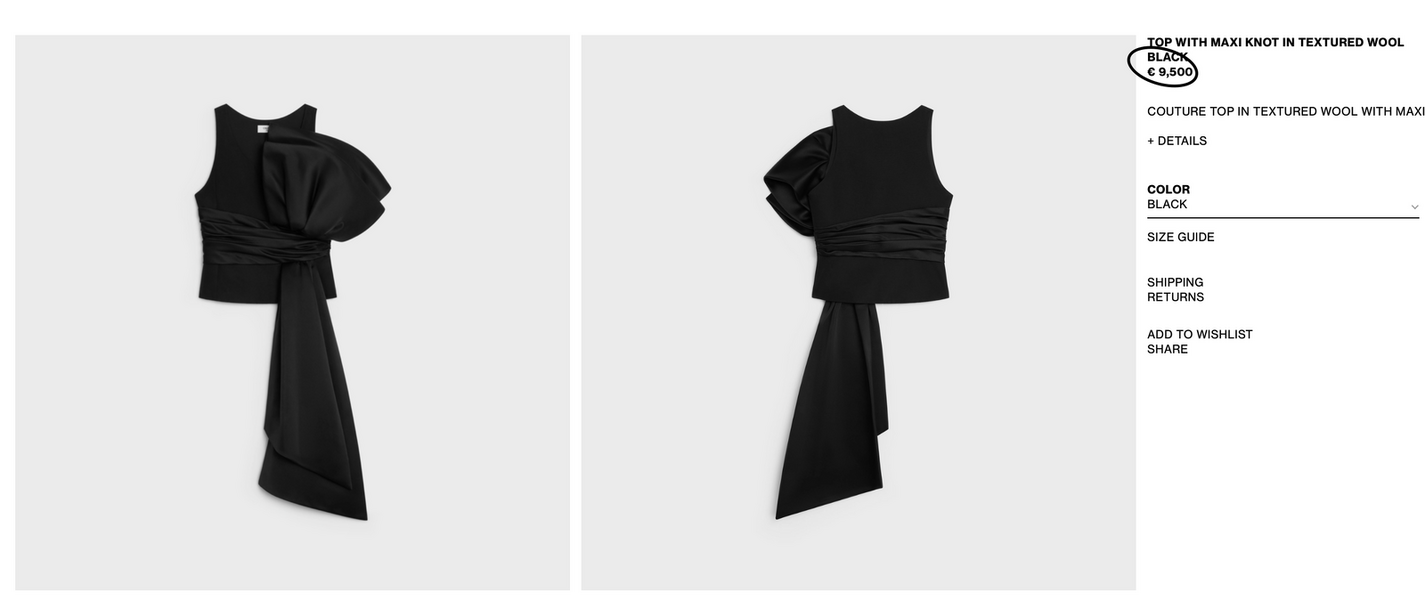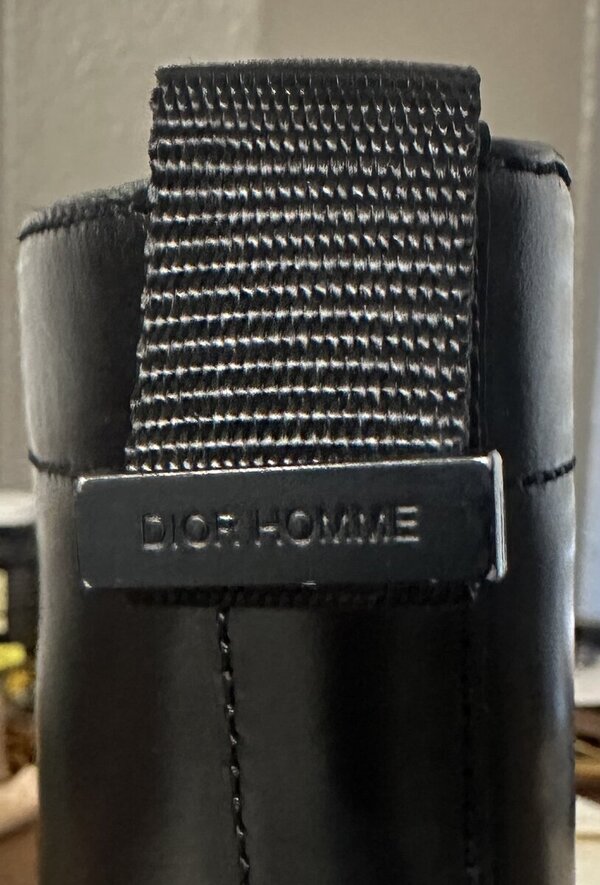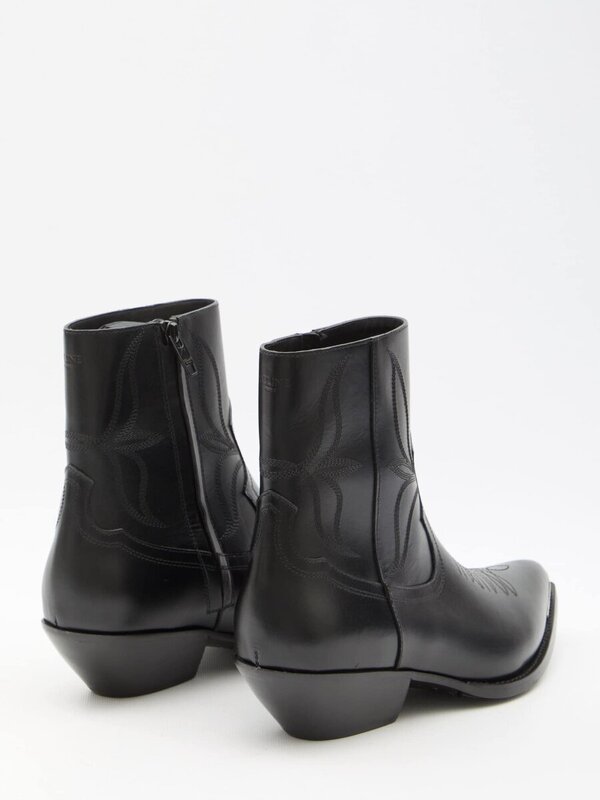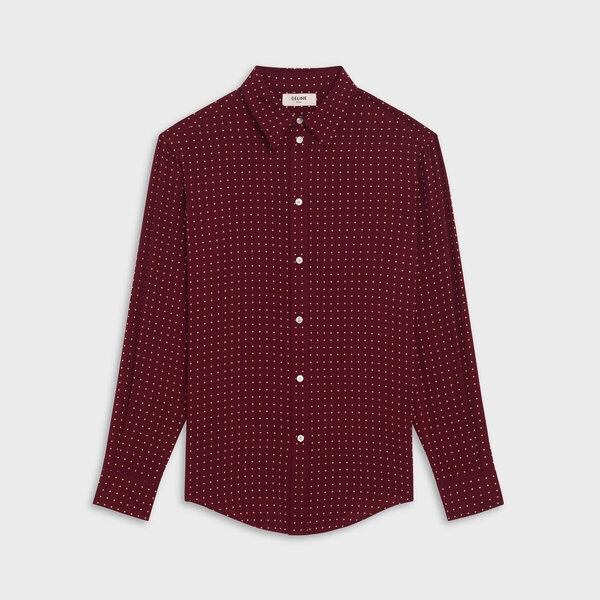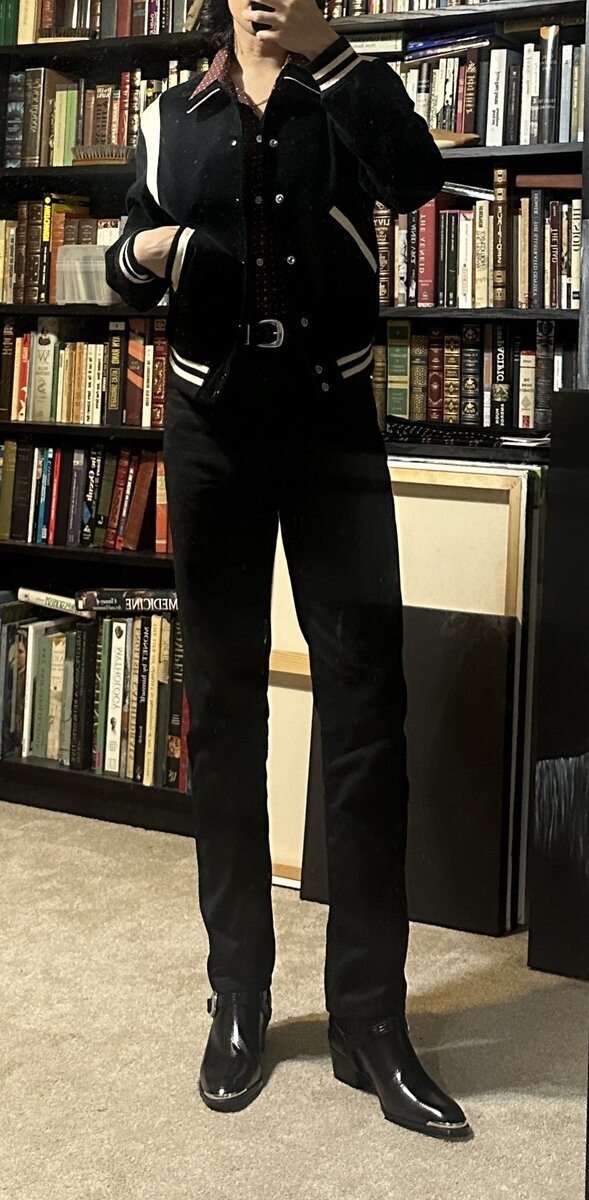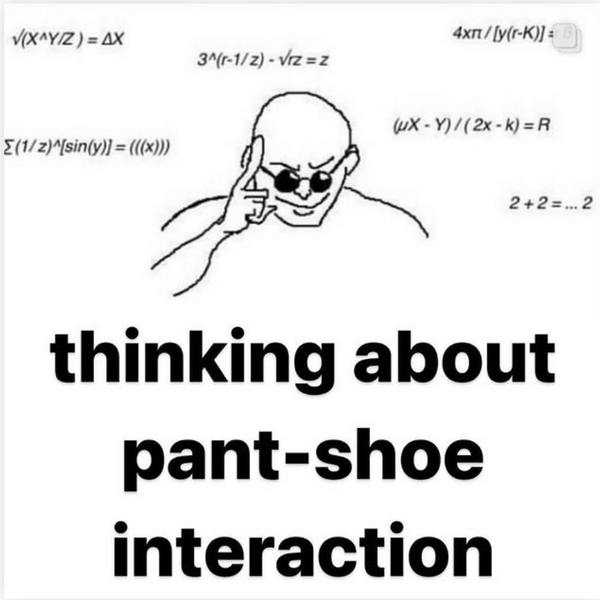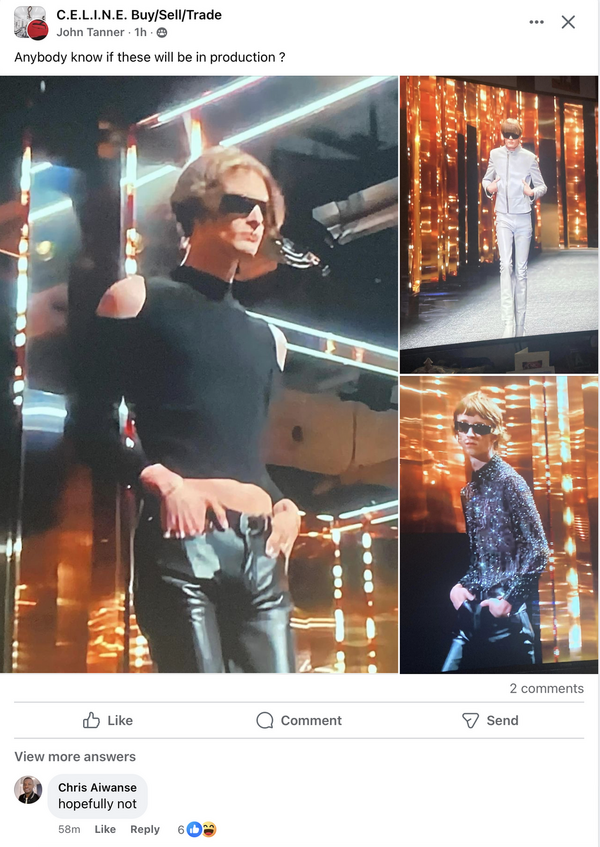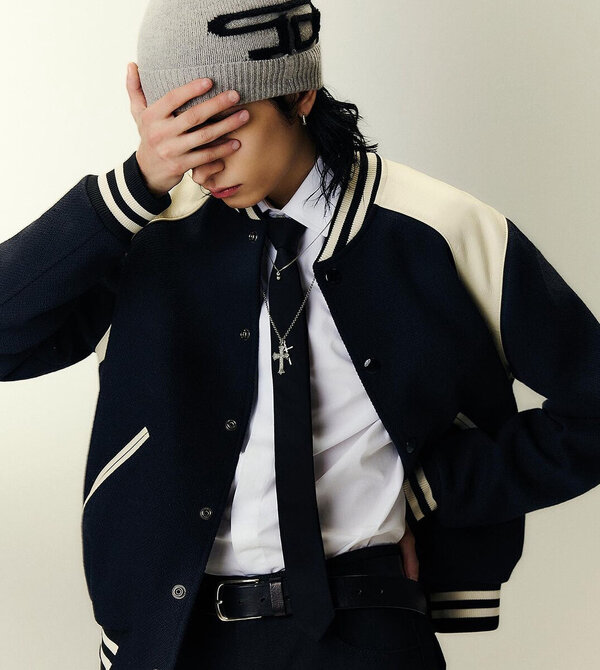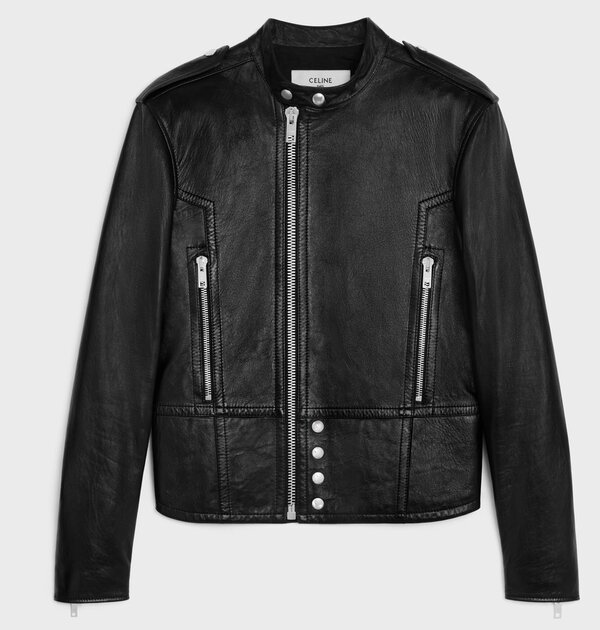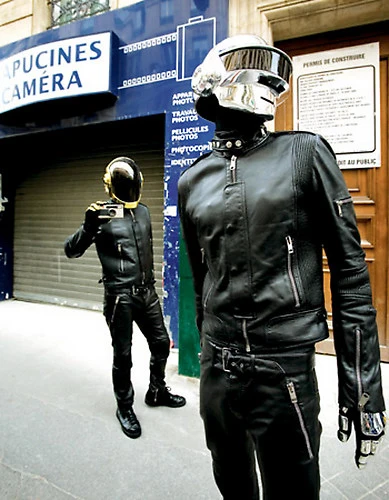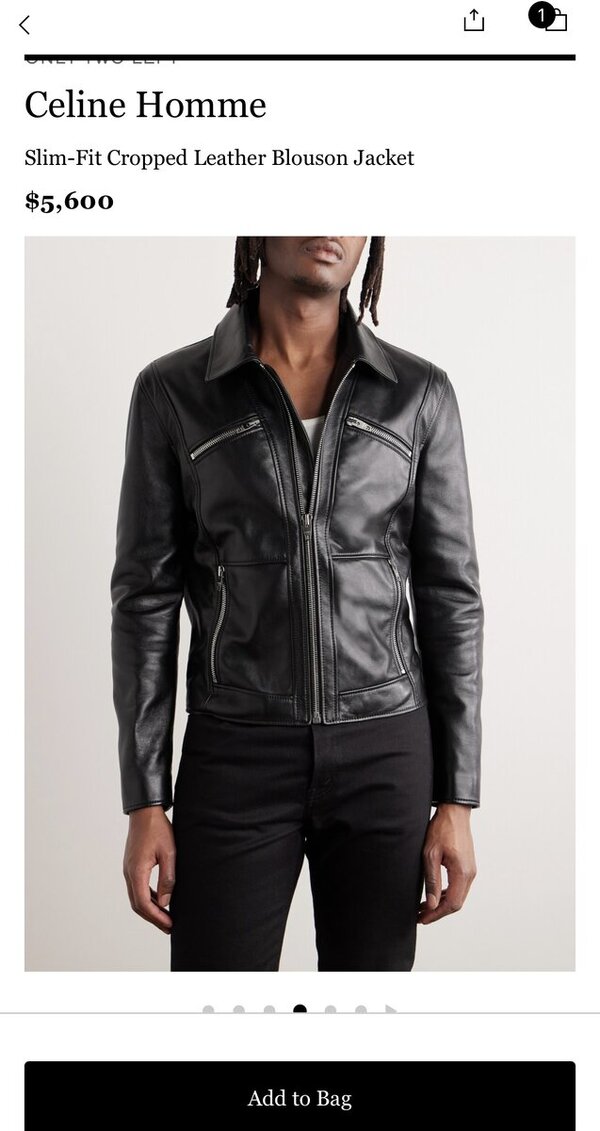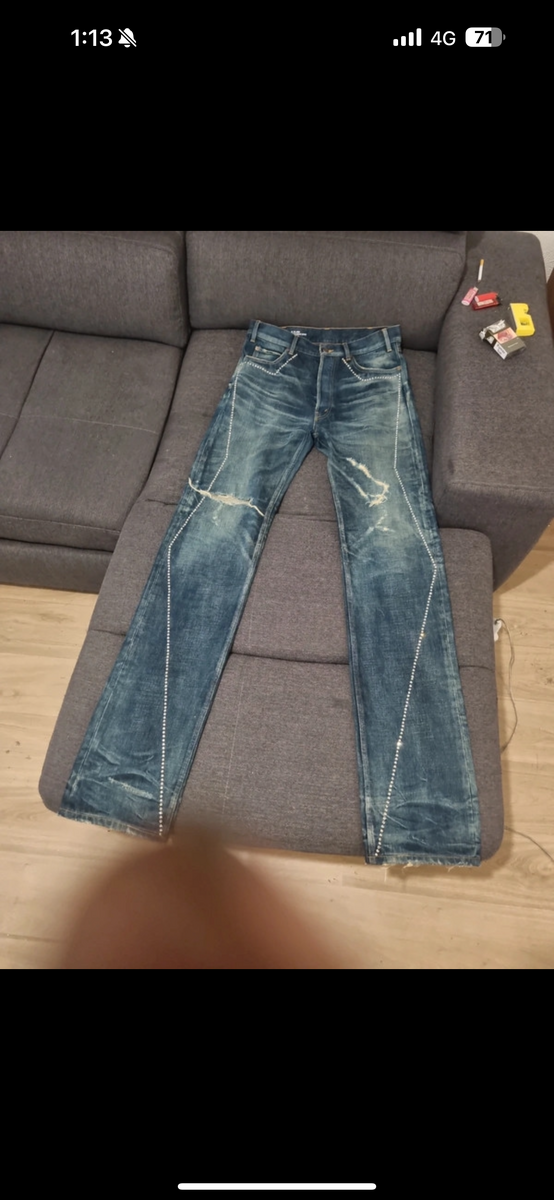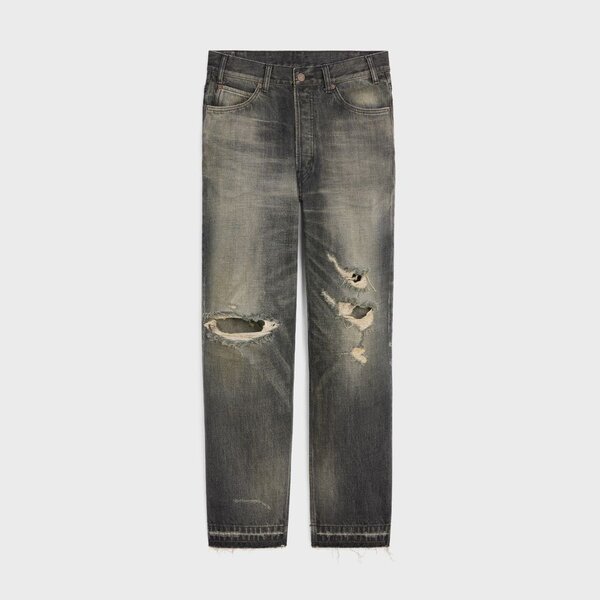thorns
Distinguished Member
- Joined
- May 2, 2015
- Messages
- 2,792
- Reaction score
- 2,540
Reposting an interview sometime around fw19
Vogue Australia October 2019:
Originally published in Vogue Paris, which is why we are seeing Lalanne virtually fellating Slimane throughout this interview. And from a journalistic pov it's rather nauseating.
LONE STAR
![[IMG] [IMG]](https://i.prcdn.co/img?regionKey=%2fmgxCtkABTM0px3zE5LX%2fA%3d%3d)
Hedi Slimane
Hedi Slimane’s work has ignited fashion with its singular aesthetic, occasionally sparking controversy but always shaping the conversation along the way.
He’s one of the style world’s most elusive designers, yet Hedi Slimane’s work has ignited fashion with its singular aesthetic, occasionally sparking controversy but always shaping the conversation along the way. By Olivier Lalanne. Styled by Emmanuel Alt. Photographed by Hedi Slimane.
Having helmed three flagship fashion houses in the past 20 years, Hedi Slimane has left an imprint of unprecedented coherence on the era. With rock’n’roll, black and white, the fluidity of genders, Paris, Los Angeles and the cult of youth pervasive in his work to this point, the designer and visionary photographer knows how to surprise. Now, as the head of Celine, his second ready-to-wear collection for the house for autumn/winter ’19/’20 celebrated a new mood no-one saw coming: a liberated neo-bourgeoisie, an incendiary desirability. As intelligent he is as intransigent, Hedi Slimane has chosen to be remain relatively mum, which makes his word, when he gives it, all the more meaningful. Here, the creative director speaks to Vogue.
Your second collection under the banner of Celine brings to light a neo-bourgeoisie, at once strict and brazen, far from the rock aesthetics that one associates with your style. We feel an evolution of the image of the woman; certain volumes and materials contrast with your previous collection. This season surprised people as much as it was celebrated. Do you consider it a break from the past?
“Within a context of normcore fashion and logotype streetwear, the Parisian neo-bourgeoisie of Celine would almost pass for punk, totally off-track. Everything in fashion is a matter of context and balance. Radicality is a concept that moves in opposition to the style of the moment – the ideas received, the societal movements and the cultural symbols of a given era. Also, it’s a matter of getting dressed in the style of the bourgeoisie – brazen and liberated – as was sometimes the case with Anita Pallenberg on the arm of Keith Richards. Rock aesthetics paradoxically borrow much from this dressing room: the conventions of ‘respectability’, the upper class, to better deflect them. For me it’s a game; a simple variation of my personal style and the break from the past.”
This season is comprised of impeccable capes, reworked culotte skirts, clothes with tennis stripes, navy shawls, new takes on the trench and subdued colours. You have imagined a series of classics in power. In your opinion, is Celine’s DNA classic?
“It’s been 20 years since I have designed and obsessively redesigned my wardrobe codes. Hence now at Celine I am recreating new classics, separate feminine and masculine items, by integrating old-fashioned pieces – the culotte skirts in particular being a part of it. It is also a question of putting Celine back into a specific cultural space. The cinematic projection of Celine’s codes as being feminine, to a Parisian woman, or a young French woman whom we all know and to whom we are undoubtedly all attached, seems essential to me. Classicism at Celine, finally, is the artisanal dimension, the extreme quality, the French tone. There is in this house something reassuring, perennial, a concept of intrinsic value in luxury leather goods, or a perfect garment.”
You embody a look and a state of mind that is very Parisian. What are the characteristics of the Parisian?
“The spirit above all things. A form of freedom of tone, action and language, a form of refinement and naturalness that one finds from mother to daughter, and from father to son. I have always identified with French cinema, as inspiring today as it was yesterday. However, rather than name a series of muses, I would say that the street still inspires me today, in its spread, generation after generation, of this style that is replicated the world over.”
What are, according to you, the roles and remits for the artistic director at the head of a historic couture house?
“There isn’t a general definition, since each couture house has a destiny, a history, values of its own. For a couturier, what seems essential to me is the time to feel, to anticipate, to adapt a house to fit its time. After redefining Celine’s visual identity, in particular with eliminating of the accent on the logo and the establishment of the male and female readyto-wear clothing, it will be a question of launching perfumes as well as a high couture line.”
The gradual introduction of these, you call the ‘fundamentals’. What do you mean by that?
“Celine is a grand couture house whose reach and vocabulary must be broadened. It is crucial to change the parameters and express its values more broadly, in particular with regard to the masculine – but also in the realm of perfume. It was necessary to reintroduce a notion of handmade haute couture in order to re-position Celine in Paris, in its historical context. The fundamentals are also in the creation of great classics and recurring elements of language specific to Celine.”
Some of the reactions to your first runway show were ferocious. How did you take this and what state of mind are you in today, nearly two years after taking the reins of the couture house?
“It was inevitable with a 180-degree turn, financial stakes, conflicts of interests, and it was a very political and legal context that was around me. Despite this, it would not have occurred to me to take down the walls. It was a matter of engaging in a sincere and uncompromising dialogue and reintroducing a Parisian tone at Celine. I had also experienced exactly the same thing at Saint Laurent in 2012. In the end, the unexpected noise surrounding this collection on the Parisian night was a blessing in terms of Celine’s notoriety. What publicity for a short cocktail dress, in a very puritanical and negative context. It is precisely what I needed to launch the return of the bourgeois spirit six months later. Here, as in 2012, the criticism had a proportionally inverse effect to what it was aiming for, and everything fell back into general amnesia six months later. As for my state of mind, I would say that I always stay on course, and in the background, my course is the long course, house after house, without ever compromising the comprehensibility and coherence of the subject.”
You have helmed Dior Homme, Saint Laurent and now Celine, three couture houses with very particular identities. Nevertheless, you have succeeded in developing a coherent style over the years, something very identifiable as your own – a freedom that some see as moving away from the pedigrees of these couture houses. In what way does this inspire you?
“Couture houses are not luxury hotels where one engages in his usual habits. They are filled with integrity. The couturier, not to be confused with a stylist, prints his personality, his commitment and his identifiable style, provided, ideally, that he has them. This does not prevent him, like a director whose style is recognised, from having a script, what you call the pedigree of the house. When, on the other hand, there is no personal style, there is always the option, in order to exist, of methodically usurping the stylistic identity and vision of his predecessor.”
LVM chairman and CEO Bernard Arnault anticipated a turnover of two to three billion euros for Celine in five years. Do you feel his ambition and his faith in you and your talent as pressure?
“From my point of view, the shared ambition is the renewed Celine couture house, and what it can represent in the long term. Pressure has been my daily companion for 20 years, so I remain focussed on the essential: creation. Not only numerical but a patrimonial approach, the creation of intrinsic value, influence, the cultural lay of the land in the long term. It is a question of laying a solid foundation, as I have done before at Dior and Saint Laurent. Pressure has been my daily companion for 20 years, so I remain focussed on the essential: creation.”
What is the process of creating a collection? What inspires you?
“It is always perfect strangers. Love at first sight in other words and for a girl or a boy that constitutes a seasonal Polaroid. At the same time, I do my research on the perfect wardrobe. I rework my classics a billion times, season after season. This is still a form of craftsmanship.”
You’ve worked in the world of fashion for more than two decades. What change, evolution or, on the contrary, what regression has had the biggest impact on you?
“One could fear a regression in so many values of fundamental freedom when creating, and this is naturally true in all fields. The radical change for the best and the worst is the suppression of fashion, the global scale that significantly changes the way of communicating around creation, the full-volume amplification of fashion messages. There is, sadly, this posture of the politically correct, which is also a form of tyranny of the first degree. In short, we are not totally at ease. We must creatively resist this form of neoconservatism in disguise.”
At a time when social networks have become all-powerful, you remain resolutely withdrawn and discreet. For what reasons?
“At the very beginning of Instagram, I liked the idea of the artistic project, the photographic blog. We can now wonder about the fascination with the quantitative, the number of people who, on Instagram, impress the crowds for social currency. What is creatively minor becomes major thanks to these social networks. Centuries of art history, all disciplines combined, have nevertheless always ‘lost’ to the popularity contest. Add to this, this obsession with exposing everything, commenting on everything – putting everything out there has become banal.”
What do you like to do when you are not working?
“That never happens. Everything is potentially integrated with the process of creation; my down time, when I go out, what I read, the multiple concerts that I attend, the subjects that I photograph …”
Through your photographic work, you have said that you document the times. What is your view of your time?
“I observe, with amazement, the rise of populism, intolerance, the rejection of the other. Social media is, despite itself, the source of many of our misfortunes. Photography and fashion, on the other hand, give me hope. To document youth in California, France or other places, is an exercise in salvation. In this way I regain confidence in my times.”
Even though you have photographed icons with visible wrinkles (Brian Wilson, Kenneth Anger, Françoise Hardy, Chuck Berry, Pierre Bergé … ), your work, both stylistic and photographic, is intimately associated with capturing youth. What inspires you, with the liberation of generation Y and Z in particular, in relation to the idea of a standard of beauty, the opposition of genres and desires?
“Youth has always been at the heart of everything I’ve undertaken and created. I am very sensitive to that form of freedom and expression of difference, the explosion of a universal model, a point on which I have worked a lot, in particular on the issue of gender, since my first runway parades toward the end of the 90s. I am, however, disappointed in seeing that intolerance sometimes changes sides. The affirmation of the self is also the acceptance of the other.”
A creator’s talent frequently rests on his instinct, his ability to be in tune with the times. Do you think that after a certain age one inevitably stops being a true driving force for new propositions?
“Instinct and an understanding of the times have nothing to do with age. It is something innate, I think. It has to do with being involved, entering into a dialogue with the times, and exploring without ever withdrawing from life’s perpetual movement. In fashion it is essential, and as time passes it is important to keep a balance between the principles of recognition, permanence, knowingly and voluntarily repeating oneself, and the Polaroid of the instant present. It is a construction on two axes.”
Karl Lagerfeld did not hide the admiration and tenderness he felt for you; you were always close. How did you experience the loss of him?
“I took [the loss of] Karl very badly. I miss him terribly. I loved him immensely, viscerally. I have so many wonderful memories with him. I think all the time of him, our first fittings, my first Dior show, with Karl in the cabin and Yves [Saint Laurent] in the forefront, our happy trips to Berlin or Monaco, our unlikely dance classes, dinners for more time to talk nonsense. These last years have been very hard. I have lost my bearings, many friends and mentors. First David Bowie, whom I adored more than anyone, then Pierre Bergé, Azzedine Alaïa, then Karl. It is a great sadness.”
You are very attached to intellectual property. Through your journey in these three houses, what do you consider your codes, your heritage?
“I actually have a stylistic grammar, a heritage, and a silhouette or allure that is invariable and identifiable 20 years later. It is just as true for my black-and-white photographic style, my light, the choice of my subjects. For the rest, I work alone, since I do not have any artistic director, photo stylist, casting director or photographer. Nothing is done by proxy. This then allows an alignment and distillation of my style, without outside influence. I was not particularly sensitive to intellectual property, until I was looted by an organised gang. This repeated attempt at depersonalisation set the record straight. It forced me to make life choices in order to preserve my identity. At the start of the 2000s, I launched my silhouette known as ‘skinny’, a black line, which incidentally was my way of dressing for ages. I redesigned and put the shoulders back in their place, related them to the skinny jeans, which I put in a collection for the first time at Dior, to thin ties, to black leather. My androgynous casting, with entire generations of musicians or artists, is invariable. My black-and-white style is linked intrinsically with music, what you call ‘rock aesthetics’. Finally, I went forward in cycles. I explored Berlin at the start of the 2000s. After an English period [the years of renewal of British rock], I lived for 10 years in California, beginning in 2008. The intense exploration of California, of musical and artistic scenes, the reports, the books and exhibitions, the collections I dedicated to an alternative idea of California, have shaped my life. It is at this stage an imaginary element inseparable from my style.”
The fashion world is experiencing upheavals in all stages: creation, communications, consumption. What major changes do you see in the coming years?
“We will have to defend the values of progress, preserve, no matter the cost, the freedom of tone; freedom at all costs, despite all forms of trolling and the haters of all sorts. Beyond that, I am optimistic as I see an essential reintegration of the real to the detriment of the virtual in the works. At this stage, refocussing is essential.”
Hedi Slimane, in three words, how would you describe yourself?
“I would say consistent. You have the choice of the other two.”
“Youth has always been at the heart of everything I’ve undertaken and created. I am very sensitive to that form of freedom”
Vogue Australia via PressReader
———————————————-
A lot of people criticize the ss21 portraits of a generation collections to be a huge deviation from the codes that Hedi is building for Celine, but it seems like Hedi has mentioned from the get go his goal to expand the vocabulary at Celine. I find it fascinating how Hedi brings up how rock borrows from the bourgeoisie. I see how hip hop borrowing from rock nowadays, as a sort of evolution and passing of the torch. I really like how the idea of rocking ties casually, in a age where people are dressing more and more casual, has this undeniable air of rebellion to it.
Personally I’m not into “fashion” so I really appreciate Hedi’s more grounded approach to his ready-to-wear collections. It seems like this more grounded approach is also to help set it up to be more distinct from the eventual haute couture line he wants to push at Celine. When he uses the analogy of describing his role being similar to a movie director, it further reinforces to me my own philosophy towards what I wear. Also, Hedi delineating his inspirations starting from Berlin techno, to indie British rock, to indie LA rock, to post-punk, and now to hip hop is a reminder that his musical inspirations have been varied throughout his career. What do you guys feel about his interview now that we have even more context of his work at Celine so far?
Vogue Australia October 2019:
Originally published in Vogue Paris, which is why we are seeing Lalanne virtually fellating Slimane throughout this interview. And from a journalistic pov it's rather nauseating.
LONE STAR
Hedi Slimane
Hedi Slimane’s work has ignited fashion with its singular aesthetic, occasionally sparking controversy but always shaping the conversation along the way.
He’s one of the style world’s most elusive designers, yet Hedi Slimane’s work has ignited fashion with its singular aesthetic, occasionally sparking controversy but always shaping the conversation along the way. By Olivier Lalanne. Styled by Emmanuel Alt. Photographed by Hedi Slimane.
Having helmed three flagship fashion houses in the past 20 years, Hedi Slimane has left an imprint of unprecedented coherence on the era. With rock’n’roll, black and white, the fluidity of genders, Paris, Los Angeles and the cult of youth pervasive in his work to this point, the designer and visionary photographer knows how to surprise. Now, as the head of Celine, his second ready-to-wear collection for the house for autumn/winter ’19/’20 celebrated a new mood no-one saw coming: a liberated neo-bourgeoisie, an incendiary desirability. As intelligent he is as intransigent, Hedi Slimane has chosen to be remain relatively mum, which makes his word, when he gives it, all the more meaningful. Here, the creative director speaks to Vogue.
Your second collection under the banner of Celine brings to light a neo-bourgeoisie, at once strict and brazen, far from the rock aesthetics that one associates with your style. We feel an evolution of the image of the woman; certain volumes and materials contrast with your previous collection. This season surprised people as much as it was celebrated. Do you consider it a break from the past?
“Within a context of normcore fashion and logotype streetwear, the Parisian neo-bourgeoisie of Celine would almost pass for punk, totally off-track. Everything in fashion is a matter of context and balance. Radicality is a concept that moves in opposition to the style of the moment – the ideas received, the societal movements and the cultural symbols of a given era. Also, it’s a matter of getting dressed in the style of the bourgeoisie – brazen and liberated – as was sometimes the case with Anita Pallenberg on the arm of Keith Richards. Rock aesthetics paradoxically borrow much from this dressing room: the conventions of ‘respectability’, the upper class, to better deflect them. For me it’s a game; a simple variation of my personal style and the break from the past.”
This season is comprised of impeccable capes, reworked culotte skirts, clothes with tennis stripes, navy shawls, new takes on the trench and subdued colours. You have imagined a series of classics in power. In your opinion, is Celine’s DNA classic?
“It’s been 20 years since I have designed and obsessively redesigned my wardrobe codes. Hence now at Celine I am recreating new classics, separate feminine and masculine items, by integrating old-fashioned pieces – the culotte skirts in particular being a part of it. It is also a question of putting Celine back into a specific cultural space. The cinematic projection of Celine’s codes as being feminine, to a Parisian woman, or a young French woman whom we all know and to whom we are undoubtedly all attached, seems essential to me. Classicism at Celine, finally, is the artisanal dimension, the extreme quality, the French tone. There is in this house something reassuring, perennial, a concept of intrinsic value in luxury leather goods, or a perfect garment.”
You embody a look and a state of mind that is very Parisian. What are the characteristics of the Parisian?
“The spirit above all things. A form of freedom of tone, action and language, a form of refinement and naturalness that one finds from mother to daughter, and from father to son. I have always identified with French cinema, as inspiring today as it was yesterday. However, rather than name a series of muses, I would say that the street still inspires me today, in its spread, generation after generation, of this style that is replicated the world over.”
What are, according to you, the roles and remits for the artistic director at the head of a historic couture house?
“There isn’t a general definition, since each couture house has a destiny, a history, values of its own. For a couturier, what seems essential to me is the time to feel, to anticipate, to adapt a house to fit its time. After redefining Celine’s visual identity, in particular with eliminating of the accent on the logo and the establishment of the male and female readyto-wear clothing, it will be a question of launching perfumes as well as a high couture line.”
The gradual introduction of these, you call the ‘fundamentals’. What do you mean by that?
“Celine is a grand couture house whose reach and vocabulary must be broadened. It is crucial to change the parameters and express its values more broadly, in particular with regard to the masculine – but also in the realm of perfume. It was necessary to reintroduce a notion of handmade haute couture in order to re-position Celine in Paris, in its historical context. The fundamentals are also in the creation of great classics and recurring elements of language specific to Celine.”
Some of the reactions to your first runway show were ferocious. How did you take this and what state of mind are you in today, nearly two years after taking the reins of the couture house?
“It was inevitable with a 180-degree turn, financial stakes, conflicts of interests, and it was a very political and legal context that was around me. Despite this, it would not have occurred to me to take down the walls. It was a matter of engaging in a sincere and uncompromising dialogue and reintroducing a Parisian tone at Celine. I had also experienced exactly the same thing at Saint Laurent in 2012. In the end, the unexpected noise surrounding this collection on the Parisian night was a blessing in terms of Celine’s notoriety. What publicity for a short cocktail dress, in a very puritanical and negative context. It is precisely what I needed to launch the return of the bourgeois spirit six months later. Here, as in 2012, the criticism had a proportionally inverse effect to what it was aiming for, and everything fell back into general amnesia six months later. As for my state of mind, I would say that I always stay on course, and in the background, my course is the long course, house after house, without ever compromising the comprehensibility and coherence of the subject.”
You have helmed Dior Homme, Saint Laurent and now Celine, three couture houses with very particular identities. Nevertheless, you have succeeded in developing a coherent style over the years, something very identifiable as your own – a freedom that some see as moving away from the pedigrees of these couture houses. In what way does this inspire you?
“Couture houses are not luxury hotels where one engages in his usual habits. They are filled with integrity. The couturier, not to be confused with a stylist, prints his personality, his commitment and his identifiable style, provided, ideally, that he has them. This does not prevent him, like a director whose style is recognised, from having a script, what you call the pedigree of the house. When, on the other hand, there is no personal style, there is always the option, in order to exist, of methodically usurping the stylistic identity and vision of his predecessor.”
LVM chairman and CEO Bernard Arnault anticipated a turnover of two to three billion euros for Celine in five years. Do you feel his ambition and his faith in you and your talent as pressure?
“From my point of view, the shared ambition is the renewed Celine couture house, and what it can represent in the long term. Pressure has been my daily companion for 20 years, so I remain focussed on the essential: creation. Not only numerical but a patrimonial approach, the creation of intrinsic value, influence, the cultural lay of the land in the long term. It is a question of laying a solid foundation, as I have done before at Dior and Saint Laurent. Pressure has been my daily companion for 20 years, so I remain focussed on the essential: creation.”
What is the process of creating a collection? What inspires you?
“It is always perfect strangers. Love at first sight in other words and for a girl or a boy that constitutes a seasonal Polaroid. At the same time, I do my research on the perfect wardrobe. I rework my classics a billion times, season after season. This is still a form of craftsmanship.”
You’ve worked in the world of fashion for more than two decades. What change, evolution or, on the contrary, what regression has had the biggest impact on you?
“One could fear a regression in so many values of fundamental freedom when creating, and this is naturally true in all fields. The radical change for the best and the worst is the suppression of fashion, the global scale that significantly changes the way of communicating around creation, the full-volume amplification of fashion messages. There is, sadly, this posture of the politically correct, which is also a form of tyranny of the first degree. In short, we are not totally at ease. We must creatively resist this form of neoconservatism in disguise.”
At a time when social networks have become all-powerful, you remain resolutely withdrawn and discreet. For what reasons?
“At the very beginning of Instagram, I liked the idea of the artistic project, the photographic blog. We can now wonder about the fascination with the quantitative, the number of people who, on Instagram, impress the crowds for social currency. What is creatively minor becomes major thanks to these social networks. Centuries of art history, all disciplines combined, have nevertheless always ‘lost’ to the popularity contest. Add to this, this obsession with exposing everything, commenting on everything – putting everything out there has become banal.”
What do you like to do when you are not working?
“That never happens. Everything is potentially integrated with the process of creation; my down time, when I go out, what I read, the multiple concerts that I attend, the subjects that I photograph …”
Through your photographic work, you have said that you document the times. What is your view of your time?
“I observe, with amazement, the rise of populism, intolerance, the rejection of the other. Social media is, despite itself, the source of many of our misfortunes. Photography and fashion, on the other hand, give me hope. To document youth in California, France or other places, is an exercise in salvation. In this way I regain confidence in my times.”
Even though you have photographed icons with visible wrinkles (Brian Wilson, Kenneth Anger, Françoise Hardy, Chuck Berry, Pierre Bergé … ), your work, both stylistic and photographic, is intimately associated with capturing youth. What inspires you, with the liberation of generation Y and Z in particular, in relation to the idea of a standard of beauty, the opposition of genres and desires?
“Youth has always been at the heart of everything I’ve undertaken and created. I am very sensitive to that form of freedom and expression of difference, the explosion of a universal model, a point on which I have worked a lot, in particular on the issue of gender, since my first runway parades toward the end of the 90s. I am, however, disappointed in seeing that intolerance sometimes changes sides. The affirmation of the self is also the acceptance of the other.”
A creator’s talent frequently rests on his instinct, his ability to be in tune with the times. Do you think that after a certain age one inevitably stops being a true driving force for new propositions?
“Instinct and an understanding of the times have nothing to do with age. It is something innate, I think. It has to do with being involved, entering into a dialogue with the times, and exploring without ever withdrawing from life’s perpetual movement. In fashion it is essential, and as time passes it is important to keep a balance between the principles of recognition, permanence, knowingly and voluntarily repeating oneself, and the Polaroid of the instant present. It is a construction on two axes.”
Karl Lagerfeld did not hide the admiration and tenderness he felt for you; you were always close. How did you experience the loss of him?
“I took [the loss of] Karl very badly. I miss him terribly. I loved him immensely, viscerally. I have so many wonderful memories with him. I think all the time of him, our first fittings, my first Dior show, with Karl in the cabin and Yves [Saint Laurent] in the forefront, our happy trips to Berlin or Monaco, our unlikely dance classes, dinners for more time to talk nonsense. These last years have been very hard. I have lost my bearings, many friends and mentors. First David Bowie, whom I adored more than anyone, then Pierre Bergé, Azzedine Alaïa, then Karl. It is a great sadness.”
You are very attached to intellectual property. Through your journey in these three houses, what do you consider your codes, your heritage?
“I actually have a stylistic grammar, a heritage, and a silhouette or allure that is invariable and identifiable 20 years later. It is just as true for my black-and-white photographic style, my light, the choice of my subjects. For the rest, I work alone, since I do not have any artistic director, photo stylist, casting director or photographer. Nothing is done by proxy. This then allows an alignment and distillation of my style, without outside influence. I was not particularly sensitive to intellectual property, until I was looted by an organised gang. This repeated attempt at depersonalisation set the record straight. It forced me to make life choices in order to preserve my identity. At the start of the 2000s, I launched my silhouette known as ‘skinny’, a black line, which incidentally was my way of dressing for ages. I redesigned and put the shoulders back in their place, related them to the skinny jeans, which I put in a collection for the first time at Dior, to thin ties, to black leather. My androgynous casting, with entire generations of musicians or artists, is invariable. My black-and-white style is linked intrinsically with music, what you call ‘rock aesthetics’. Finally, I went forward in cycles. I explored Berlin at the start of the 2000s. After an English period [the years of renewal of British rock], I lived for 10 years in California, beginning in 2008. The intense exploration of California, of musical and artistic scenes, the reports, the books and exhibitions, the collections I dedicated to an alternative idea of California, have shaped my life. It is at this stage an imaginary element inseparable from my style.”
The fashion world is experiencing upheavals in all stages: creation, communications, consumption. What major changes do you see in the coming years?
“We will have to defend the values of progress, preserve, no matter the cost, the freedom of tone; freedom at all costs, despite all forms of trolling and the haters of all sorts. Beyond that, I am optimistic as I see an essential reintegration of the real to the detriment of the virtual in the works. At this stage, refocussing is essential.”
Hedi Slimane, in three words, how would you describe yourself?
“I would say consistent. You have the choice of the other two.”
“Youth has always been at the heart of everything I’ve undertaken and created. I am very sensitive to that form of freedom”
Vogue Australia via PressReader
———————————————-
A lot of people criticize the ss21 portraits of a generation collections to be a huge deviation from the codes that Hedi is building for Celine, but it seems like Hedi has mentioned from the get go his goal to expand the vocabulary at Celine. I find it fascinating how Hedi brings up how rock borrows from the bourgeoisie. I see how hip hop borrowing from rock nowadays, as a sort of evolution and passing of the torch. I really like how the idea of rocking ties casually, in a age where people are dressing more and more casual, has this undeniable air of rebellion to it.
Personally I’m not into “fashion” so I really appreciate Hedi’s more grounded approach to his ready-to-wear collections. It seems like this more grounded approach is also to help set it up to be more distinct from the eventual haute couture line he wants to push at Celine. When he uses the analogy of describing his role being similar to a movie director, it further reinforces to me my own philosophy towards what I wear. Also, Hedi delineating his inspirations starting from Berlin techno, to indie British rock, to indie LA rock, to post-punk, and now to hip hop is a reminder that his musical inspirations have been varied throughout his career. What do you guys feel about his interview now that we have even more context of his work at Celine so far?
